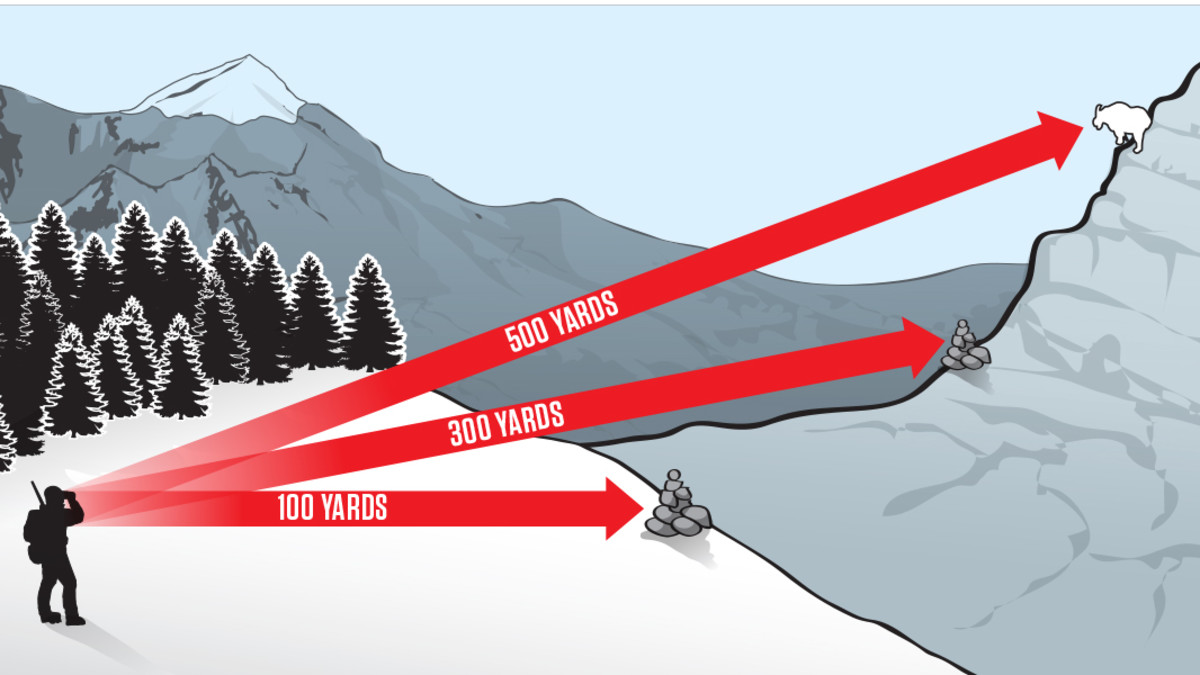
Carrying a rangefinder helps you eliminate uncertainty about distances when shooting rifles or bows. When you know the actual distance to the target, you’ll have more confidence in taking the shot or you’ll know that it’s too far away to risk it.
Angle Compensation
The best models have a function that gives you the line-of-sight distance as well as the horizontal distance. Imagine yourself sitting 25’ up in a tree while looking at a squirrel that’s fifteen feet from the base of the tree. The line of sight distance to the squirrel is just over 29’, while the horizontal distance is only 15’. When shooting, horizontal distance is all that matters.
Whether you hunt with a bow or a rifle, angle-compensating rangefinders are a huge advantage when you’re working in steep terrain where angled shots are a constant possibility.
Acquiring the Target
The thing that really differentiates a good rangefinder from a bad one is the device’s ability to detect a small target. A rangefinder might boast 1,000-yard capabilities, but then it only works when you’re trying to range house-sized objects at that distance. Before buying a rangefinder, test it out.
At the very minimum, you should be able to get a reading on a deer-sized target at whatever your maximum comfortable shooting distance is. While there are several good range finders on the market, the Leica Rangemaster is one of the finest units ever produced for rifle hunters. If you’re on a tighter budget, or you’re a bowhunter, check out the Vortex Ranger 1000.
Rangefinders as a Tool for Stalking
Rangefinders can come in handy when planning stalks on distant animals. By taking a reading on the animal itself, as well as various topographical features between you and it, you can select prime shooting locations that lie within an optimal shooting distance of your prey.





